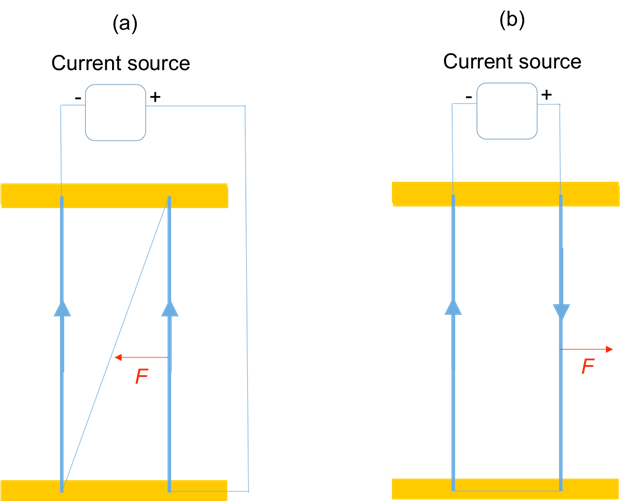Magnetic Fields
Overview
Source: Yong P. Chen, PhD, Department of Physics & Astronomy, College of Science, Purdue University, West Lafayette, IN
Magnetic fields can be generated by moving charges, such as an electrical current. The magnetic field generated by a current can be calculated from the Maxwell equation. In addition, magnetic objects such as bar magnets can also generate magnetic fields due to microscopic dynamics of charges inside the material. Magnetic fields will exert magnetic force on other moving charges or magnetic objects, with the force proportional to the magnetic field. Magnetic fields are fundamental to electromagnetism and underlie many practical applications ranging from compasses to magnetic resonance imaging.
This experiment will demonstrate magnetic fields produced by a permanent bar magnet as well as an electrical current, using small compass needle magnets that align with magnetic fields. This experiment will also demonstrate the force exerted by the magnetic fields produced by a current on another current-carrying wire.
Procedure
1. Visualize Magnetic Field Lines
- Obtain a segment of straight conducting wire (at least several cm long), and a DC current source.
- Obtain a plate with a hole in the middle and several small compass needles on the plate, each mounted on a pin and freely rotatable.
- Feed the conducting wire through the hole so the straight section is perpendicular to the plate. Connect the conducting wire to the DC current source, as shown in Figure 2a. The connection can be mad
Results
For steps 1.3-1.4, before the current is switched on, the compass needles are oriented randomly. After switching on the current, which flows in the wire from top to bottom, the compass needles will align themselves with the local magnetic field in a circular pattern, as depicted in Figure 4a (top view). Upon reversing the current, the magnetic field reverses, as do the orientations of the compasses, as depicted in Figure 4b.
Application and Summary
In this experiment, we have visualized magnetic fields using compass needles that orient with the local magnetic field. We also demonstrated the Lorentz force of a magnetic field produced by a current on another nearly parallel current.
Magnetic fields play important roles in our everyday life and technology. They are generated by commonly used bar magnets or "kitchen magnets" as well as electromagnets (solenoids), and are used to pick up other magnetic objects. Earth also generates a
Tags
Skip to...
Videos from this collection:

Now Playing
Magnetic Fields
Physics II
33.6K Views

Electric Fields
Physics II
77.7K Views

Electric Potential
Physics II
105.2K Views

Electric Charge in a Magnetic Field
Physics II
33.7K Views

Investigation Ohm's Law for Ohmic and Nonohmic Conductors
Physics II
26.3K Views

Series and Parallel Resistors
Physics II
33.2K Views

Capacitance
Physics II
43.8K Views

Inductance
Physics II
21.6K Views

RC/RL/LC Circuits
Physics II
143.1K Views

Semiconductors
Physics II
29.9K Views

Photoelectric Effect
Physics II
32.8K Views

Reflection and Refraction
Physics II
36.2K Views

Interference and Diffraction
Physics II
91.4K Views

Standing Waves
Physics II
49.9K Views

Sound Waves and Doppler Shift
Physics II
23.5K Views
Copyright © 2025 MyJoVE Corporation. All rights reserved

